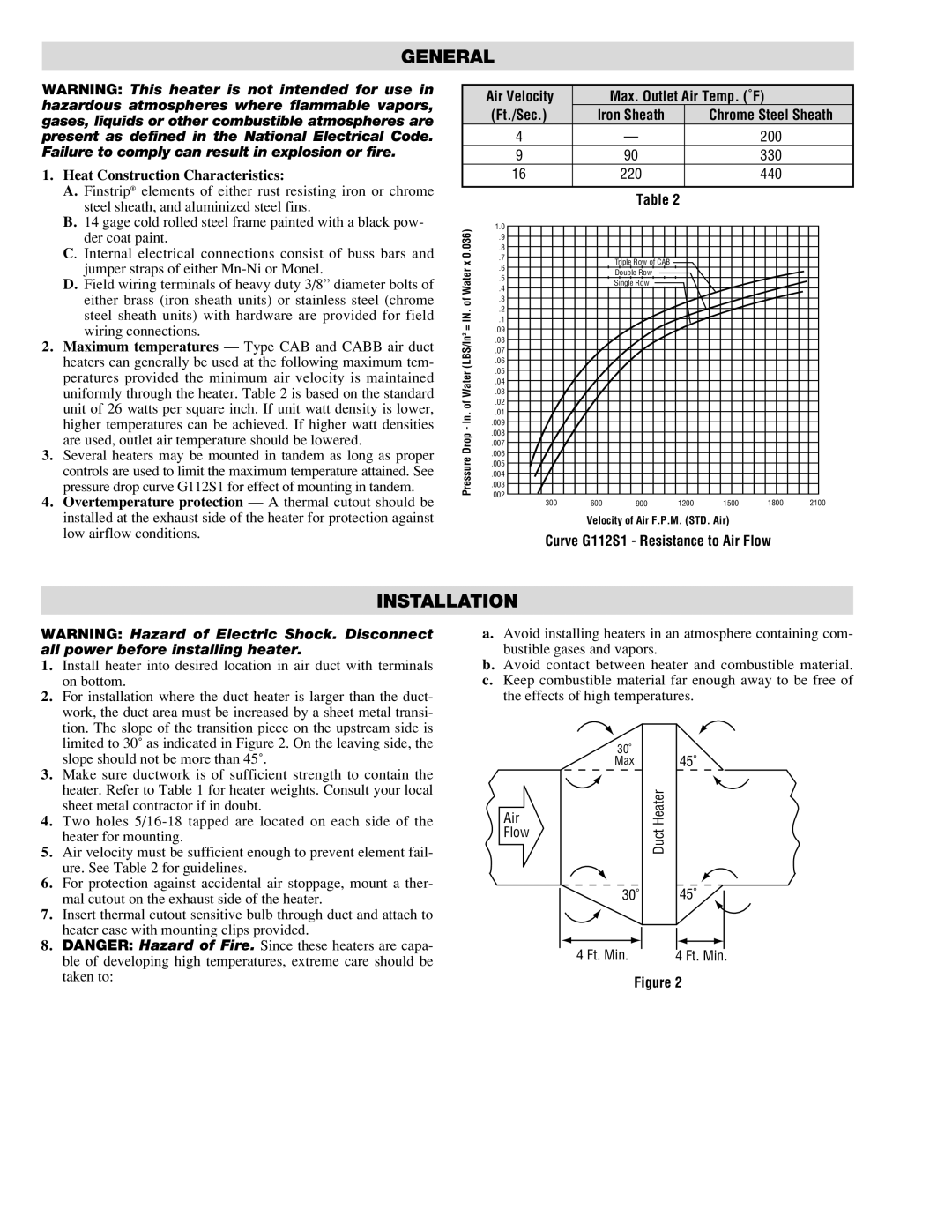CAB specifications
Chromalox CAB (Custom Application Boiler) represents a significant advancement in heating technology, designed specifically to cater to the unique demands of various industrial applications. Its design philosophy blends efficiency, durability, and user-centric features, making it an ideal solution for companies seeking reliable thermal energy systems.One of the standout features of the Chromalox CAB is its customizability. Users can tailor the system to meet specific operational needs, including varying temperature ranges, pressure requirements, and size constraints. This flexibility is crucial for industries such as pharmaceuticals, food processing, and chemical manufacturing, where distinct temperature profiles significantly impact product quality.
The CAB employs advanced heating technologies, incorporating high-quality heating elements that offer superior performance while minimizing energy consumption. Chromalox's patented heating technology, coupled with high-efficiency insulation materials, enables the CAB to maintain consistent heating without significant energy losses. This energy efficiency not only reduces operational costs but also contributes to lower carbon emissions, aligning with environmental sustainability goals.
Another notable characteristic is the robust construction of the Chromalox CAB. Built with high-grade materials, it is designed to withstand the rigors of industrial environments. The unit is resistant to corrosion and thermal stress, ensuring longevity even in challenging conditions. This durability minimizes maintenance downtime and extends the lifecycle of the system, making it a cost-effective investment for companies.
The CAB also integrates sophisticated control systems that allow for precise temperature management. Users can monitor and adjust settings remotely, enhancing operational flexibility and ensuring safety. The ability to automate various processes through programmable interfaces leads to increased productivity and less human error in temperature management.
Safety is paramount in any heating application, and the Chromalox CAB is equipped with multiple layers of safety features. These include temperature limiters, fail-safes, and alarms that alert users to any anomalies in system performance. With a focus on operational security, operators can have peace of mind knowing that their heating processes are rigorously monitored.
In summary, the Chromalox CAB stands out as a comprehensive solution in industrial heating systems. With its customizable design, advanced heating technologies, robust construction, precise control systems, and stringent safety features, the CAB is revolutionizing how industries approach thermal energy management. As businesses seek efficiency and reliability, the Chromalox CAB emerges as a top choice for modern heating solutions.

